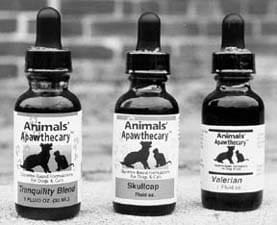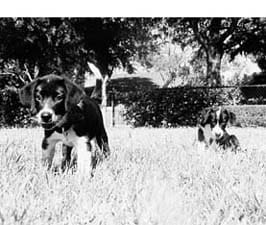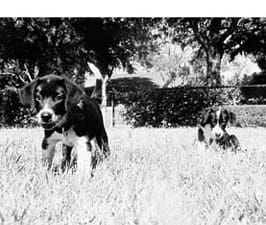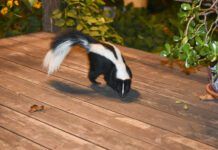In this expert answers from the backlog of Whole Dog Journal our experts answer readers concerns training small dogs, two of which came as complete surprises, and looking after dogs outdoors with non-toxic lawn care for a less chemical laden environment for pets and family.
Training Small Dogs
Last September I adopted a Shih Tzu couple who were on their way to the pound. I was led to believe the female was spayed. The male I had neutered a week after they got here. But 64 days after they moved in, I awoke to the shock of my life; the female had two puppies. I have since had her spayed.
Now, with four of these little dogs in the house, it’s becoming critical that they get a little better trained. I bought book about Shih Tzus recently, which was informative in many regards except when it comes to training them. The pictures and text were geared toward a large dog! I have perused many books in bookstores to find one that deals specifically with training a small breed. The only thing I ever found is the toy breeds need to be dealt with differently. I can’t see myself putting a choke chain on something that only weighs 14 pounds. The adult ShihTzus are pretty good but the puppies are like small children always testing the limits.

-Angelika Mercer
Honey Brook, PA
We sent this question to Bill Stavers, a dog trainer and animal behavior specialist from Beverly Hills, CA. Stavers assists veterinarians as the staff trainer/behaviorist at the Wilshire Animal Hospital, is the behavior consultant for the Huntington Hospital pet assisted therapy program, and is a certified animal evaluator for the Delta Society. He teaches dog training in classes and private lesson, using only positive reinforcement (no choke collars!) and offers telephone consultations for problem-solving.
You didn’t say what kind of misbehavior is concerning you, so I’ll address the general concept of training small dogs.
You’re right; choke collars and force are not the solution for any dogs, and may be especially inappropriate for little dogs. At the risk of using a stereotype, most small dogs (such as Jack Russell Terriers, Fox Terriers, and Shiba Inus) and some of the Northern-bred dogs (like American Eskimos, Huskies, Spitz, and Norwegian Elkhounds) don’t respond well to punishment; they get mad if you hurt them. The bigger working dogs are different. If you punish a German Shepherd or a Labrador, they tend to quit or give in: “OK, OK, I’ll lie down here,” They were bred to take orders, to work. More independent dogs don’t respond well to that approach.
The thing to use is food.
Even as recently as a few years ago, using food treats was considered taboo. People worried that if you used food to train a dog you would always have to use it for the rest of the dog’s life. But in recent years, people have begun to see that using food to train is an incredibly effective way to reinforce desirable behavior.
I would suggest you go buy Karen Pryor’s book, “A Dog and A Dolphin,” which is about using food and other reinforcers to create and reward behavior. ($7 from The Dog & Cat Book Catalog, Direct Book Service, 800-776-2665.) The book lays out the theory behind using food to train; it shows you how to elicit and then reward behaviors using reinforcements. It’s not about dog training per se, it’s just about how to use reinforcement. I guarantee that you will be able to use her principles to get any behavior you want from your Shih Tzus. The book is easy to read and enjoyable.
There’s no limit to what you can do. The Shih Tzus will work if you start practicing. You could have them all sitting in line, waiting for you to give each one a treat, in a matter of minutes.
A concern with food training is overfeeding. That’s why I encourage people to use feeding time as a training session. Instead of putting the food down and walking away, dole out the kibble piece by piece as you teach basic obedience routines. It takes 20 minutes, but in that time you can get them to do four sits, two lay downs, one go to your bed, and six come heres.
It’s fun.
If you decide to engage the services of a professional trainer, look for someone who is a member of the Association of Pet Dog Trainers. The APDT offers free referrals to local trainers (call 800-738-3647). All the members use positive reinforcement, and are familiar with Pryor’s book. They meet annually to increase their education about dogs and dog training, and generally take a forward-thinking, gentle approach to training.
———-
Non-Toxic Lawn Care
Is there any way to kill those ugly toxic mushrooms that are growing all over my lawn? How about those slimy, ugly slugs? I don’t want to use ANY chemicals because of my dogs. The mushrooms keep coming back no matter how many times I pull them out. They grow in the sun, shade, and everywhere else it seems.
-Hillary Rosanova
Crystal Lake, Illinois
We sent this question to Eileen Rushing, a Clemson University Extension Master Gardener, and co-owner of Interhay South, a hay and feed supplier and garden center in Camden, South Carolina. Interhay specializes in organic gardening products, and offers an organic lawn maintenance service.
I’m glad you’re adverse to using chemicals on your lawn. Dog and cat owners need to be especially careful about using anything toxic on their grass and there are plenty of toxic things you could use for your problems! Fortunately, all pet owners need to do to keep their lawns looking good are to use good basic cultural practices, which I’ll outline below.

It sounds to me as if your yard is generally damp. You can help dry the yard by removing any dense ground cover, trimming bushes and hedges up off the ground, and clearing your yard of undergrowth. This will discourage the mushrooms and the snails.
Specifically regarding the mushrooms: The first thing I would do is to take a sample of your soil to the closest agricultural extension office for a general test. The most important part of the test for you is the pH test. The pH scale goes from 0 to 14; neutral is 7. Mushrooms thrive in soil with a low pH, so if your soil is found to have a low pH, the extension office will be able to tell you what kind of soil amendment you can use to bring the pH closer to neutral. That will probably spell the end of the mushrooms, and it will also probably improve the health of your lawn. If the pH of your soil is not in the middle range, then it doesn’t matter how much fertilizer or anything else you use; your plants can’t change the mineral and trace elements in the soil into the form they need.
As for the slugs: The very best trap for slugs are little dishes of beer; the slugs are attracted to the beer and the salt it in kills them. Pour a little beer in plastic coffee can lids or something similar. Of course, you’ll have to dispose of dead slugs for a while, until the population is reduced enough to make you happy, but you’ll be making progress. I’ve never used these solutions myself, but I’ve read that slugs can also be discouraged with the use of oak leaf mulch and or by drenching the soil with wormwood tea. (To make the tea, you could use a big bucket of water and a bunch of the herb; just let the herbs soak in a bucket of water for a few hours in the sun, and spray the liquid on the lawn.)
Of course, you’re correct in not wanting to use the commercial slug and snail baits; they are all extremely toxic. These poisons kill dogs and cats and all kinds of animals.
Your lawn will be able to choke out the mushrooms (and any other weeds that might be present) if you can spend a little time getting the grass really healthy. Good healthy roots will fight the undesirable conditions that make your lawn look poor and let weeds and mushrooms grow.
To improve your lawn’s health, you have to do three things: use a good organic fertilizer, and aerate and de-thatch the lawn. And of course, avoid the use of all chemical fertilizers, “weed and feed” compounds, herbicides, and fungicides. All of those things end up in our water supply, and kill animals and birds and reptiles and frogs.
The best organic fertilizer we’ve seen is a liquid seaweed extract. It’s slow-acting and doesn’t leach out of the soil, like the chemical fertilizers do. And, of course, it’s completely non-toxic and can’t harm your pets, who spend a lot of time on the lawn. The proper time to fertilize is in the early spring and midsummer
Aerators and de-thatchers can both be rented. There are all different kinds, but they all accomplish the same thing: aerators have long tines that poke into the ground several inches and loosen the soil, allowing the roots to expand and grow. De-thatchers have little tines that bring that debris grass clippings, leaf particles, and other matter up and out of the grass. This opens up the soil and allows it to breathe. All these things will improve the health and appearance of your lawn, and enable you and your dogs to enjoy it more.






